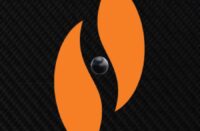System reduces radiation exposure, provides 3D, high-definition images of heart in real time
CHICAGO, Aug. 17, 2020 /PRNewswire/ — A Northwestern Medicine Bluhm Cardiovascular Institute physician was the first in Illinois to use a new advanced imaging system during cryoablation, a minimally-invasive treatment for atrial fibrillation requiring precise images of the heart.
Bradley Knight, MD, medical director of cardiac electrophysiology at Northwestern Memorial Hospital, was one of the first in the country to use the Phillips KODEX-EPD system, which offers 3D, high-definition images of a patient’s heart, during a procedure on August 5, 2020.
“I was impressed that this completely new three-dimensional mapping system, which acts much like a GPS system, can accurately and quickly re-create the anatomy of the cardiac chamber of interest and display the heart’s electrical activity using any electrode pairs placed in the heart,” said Dr. Knight.
More than 6 million Americans may have atrial fibrillation (AFib), a heart rhythm disorder when the upper and lower chambers of the heart beat out of synch, either too slowly, too quickly or simply irregularly. Symptoms can include heart palpitations, extreme fatigue, chest pain or shortness of breath, though some with AFib experience no symptoms.
A major risk of AFib is stroke; one in seven strokes is attributed to AFib.
In cryoablation, physicians use a thin, flexible tube called a balloon catheter to locate, freeze and disable the heart cells that are causing the irregular heartbeat. Imaging is critical to help the physician guide the catheter, which typically enters the body through a blood vessel in the upper leg, to the heart and the tissue that they will be ablating.
“As the population ages more Americans are being diagnosed with AFib,” said Dr. Knight, who is also the Chester C. and Deborah M. Cooley Distinguished Professor of Cardiology at Northwestern University Feinberg School of Medicine. “We are always looking for the safest, most advanced treatments for our heart rhythm patients and I was pleased to partner on this new technology.”
Philips’ KODEX-EPD system uses dielectric imaging to creates 3D, high-definition images of a patient’s cardiac structures in real time. A completely new approach to imaging the heart, dielectric imaging offers many benefits in comparison to current approaches, for both cryo and radiofrequency ablation procedures. The technology provides real-time 3D imaging, reducing the need for X-ray imaging and radiation exposure.
Northwestern Medicine’s Bluhm Cardiovascular Institute is one of the top 10 national programs for cardiology and heart surgery, according to U.S. News and World Report, and ranked the top cardiovascular program in Illinois and the surrounding states for more than 10 consecutive years. For more information about Northwestern Medicine’s top ranked cardiovascular care, go to heart.nm.org or call (312) NM-HEART.
For more information about Northwestern Medicine, visit news.nm.org/about-northwestern-medicine.html.
SOURCE Northwestern Medicine






